Japanese ramen is not just a dish; it is a culinary journey that reflects the rich and diverse culture of Japan. This article explores the unique regional styles, flavors, and ingredients that make ramen a beloved staple across the country. From the creamy tonkotsu of Fukuoka to the savory shoyu of Tokyo, each region offers its own twist on this iconic dish.
Ramen can be categorized into several styles, primarily based on the broth used. The four main types include:
- Tonkotsu – Pork bone broth that is rich and creamy.
- Shoyu – Soy sauce-based broth that is savory and slightly sweet.
- Miso – A hearty broth made from fermented soybean paste.
- Shio – Salt-based broth that is light and clear.
Each type has its own distinct flavor profile and ingredients, contributing to the overall experience of enjoying ramen.
Originating from Fukuoka, tonkotsu ramen is famous for its rich, creamy pork bone broth. The broth is created through a lengthy simmering process that can exceed 12 hours, ensuring maximum flavor extraction from the bones. This dedication to preparation results in a broth that is both savory and satisfying.
Key ingredients in tonkotsu ramen include:
- Pork bones
- Soy sauce
- Aromatic vegetables like garlic and ginger
These ingredients combine to create a depth of flavor that is unparalleled in other ramen styles.
Common toppings that enhance tonkotsu ramen include:
- Chashu – Braised pork that adds tenderness and flavor.
- Green onions – For a fresh, crunchy contrast.
- Soft-boiled eggs – Adds richness and creaminess.
Shoyu ramen is characterized by its soy sauce-based broth, which provides a well-balanced flavor that is both savory and slightly sweet. This style is particularly popular in Tokyo, where it has been perfected over decades.
Regional variations of shoyu ramen can be observed in the richness of the broth and the type of noodles used. For instance, Yokohama shoyu ramen may feature a darker broth and thicker noodles compared to its Tokyo counterpart.
Typical toppings for shoyu ramen include:
- Menma – Fermented bamboo shoots for texture.
- Nori – Seaweed that adds umami.
- Sliced green onions – For freshness.
Miso ramen has gained significant popularity due to its robust flavor and versatility. The miso-based broth offers a hearty, comforting experience that appeals to many.
Essential ingredients for miso ramen include:
- Miso paste – The star ingredient that defines the broth.
- Chicken or pork broth
- A variety of vegetables, such as corn and bean sprouts
Regions like Hokkaido have their own unique takes on miso ramen, often incorporating local ingredients such as seafood or seasonal vegetables, which reflect their culinary traditions.
Noodles are a fundamental component of ramen, contributing significantly to the dish’s texture and overall flavor. Different types of noodles are designed to complement specific broth styles.
Ramen noodles can vary in:
- Thickness
- Shape – Straight, wavy, or curly
- Texture
The preparation of noodles, including cooking time and water quality, can greatly influence the final dish, enhancing the overall ramen experience.
Toppings are crucial in ramen, as they add flavor, texture, and visual appeal. Each topping contributes to the unique character of the ramen style.
Common toppings include:
- Chashu
- Menma
- Green onions
- Boiled eggs
Regional variations in toppings reflect local ingredients and culinary traditions, showcasing the diversity of flavors found in ramen across Japan.
Understanding the cultural nuances of eating ramen can enhance your experience. From slurping to pairing with drinks, these tips will help you enjoy ramen authentically.
Ramen etiquette includes:
- Slurping noodles to enhance flavor and signal enjoyment.
- Handling chopsticks and bowls appropriately.
Pairing ramen with beverages like beer or sake can elevate the dining experience. Popular drink pairings complement various ramen styles, enhancing the overall meal.
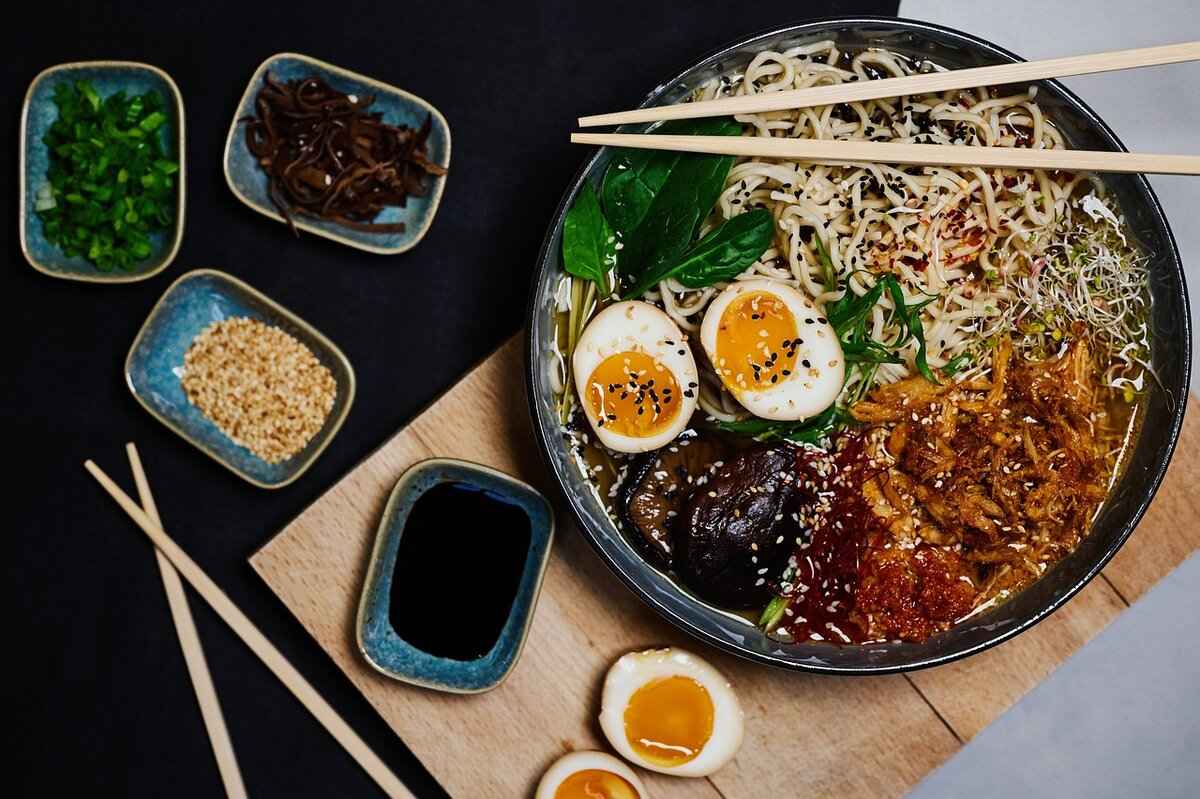
What Are the Main Types of Ramen?
Ramen, a beloved Japanese dish, is celebrated for its rich flavors and diverse styles. Each type of ramen showcases unique characteristics that reflect the regional ingredients and culinary traditions of Japan. Understanding these different styles is essential for truly appreciating the complexity and artistry behind this iconic dish.
Ramen can be categorized into several main types, primarily distinguished by their broth, noodles, and toppings. The four most recognized styles include:
- Tonkotsu Ramen – Known for its creamy and rich pork bone broth, this style originates from Fukuoka.
- Shoyu Ramen – Characterized by a soy sauce-based broth, it offers a savory and slightly sweet flavor profile.
- Miso Ramen – Gaining popularity for its hearty miso-based broth, this style is adaptable and flavorful.
- Shio Ramen – A salt-based broth that is lighter and often highlights the natural flavors of the ingredients.
The broth is the heart of any ramen dish, and its type significantly influences the overall flavor. For instance, tonkotsu ramen features a rich, creamy texture achieved through hours of simmering pork bones, while shoyu ramen offers a more balanced flavor, combining soy sauce with various aromatics. Miso ramen brings a robust and savory depth, often enhanced with vegetables, making it a favorite among many.
Noodles are another critical component of ramen, impacting both texture and taste. Ramen noodles can vary in:
- Thickness – Ranging from thin to thick, with thicker noodles often paired with heartier broths.
- Shape – Common shapes include straight, wavy, and curly, each designed to hold onto the broth differently.
For example, thicker noodles are typically used in tonkotsu ramen to complement the rich broth, while thinner noodles may be preferred in shoyu ramen for a more delicate balance.
Toppings not only enhance the flavor of ramen but also add visual appeal. Common toppings include:
- Chashu – Braised pork that adds a savory richness.
- Menma – Fermented bamboo shoots that provide a crunchy texture.
- Soft-boiled eggs – Creamy and flavorful, these are often marinated in soy sauce.
- Green onions – Fresh and aromatic, they add a burst of flavor.
Each topping contributes unique flavors and textures, creating a harmonious balance in every bowl of ramen.
Japan’s diverse regions have developed their own unique takes on ramen, influenced by local ingredients and culinary traditions. For example, Hokkaido is known for its rich miso ramen, often featuring corn and butter, while Tokyo is famous for its shoyu ramen, which typically includes a lighter broth with a complex flavor profile. Understanding these regional differences enhances the appreciation of ramen as a cultural dish.
In conclusion, ramen is more than just a meal; it is a reflection of Japan’s rich culinary heritage. By exploring the main types of ramen, the significance of broth and noodles, and the importance of toppings, one can gain a deeper understanding of this iconic dish that has captured the hearts of food lovers around the world.
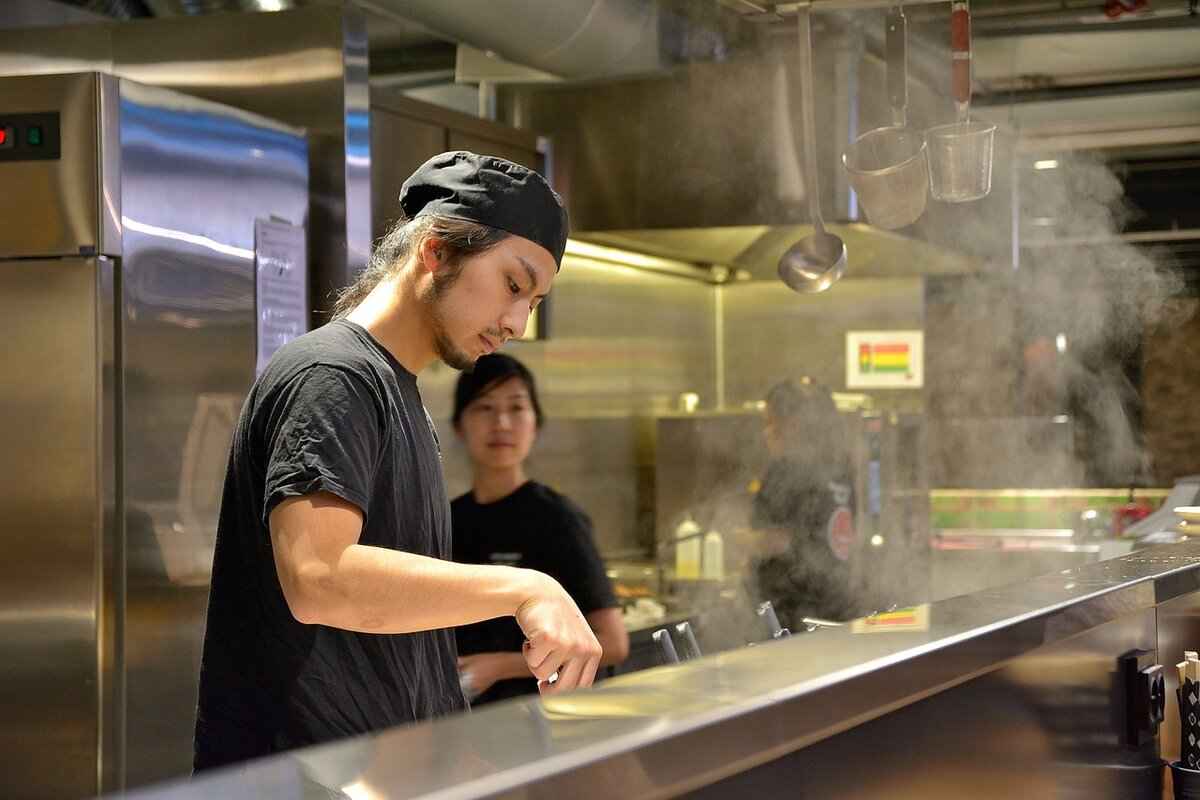
How Does Tonkotsu Ramen Stand Out?
Tonkotsu ramen is a delightful representation of Japanese culinary artistry, originating from the bustling city of Fukuoka. This ramen style is renowned for its rich, creamy pork bone broth, which sets it apart from other regional varieties. The broth is meticulously crafted through a lengthy simmering process, where pork bones are boiled for over 12 hours. This method extracts maximum flavor and collagen, resulting in a silky texture that coats the noodles beautifully.
One of the most distinctive aspects of tonkotsu ramen is its flavor profile. The broth is characterized by a deep, savory taste, often enhanced with a hint of garlic and ginger, which adds aromatic complexity. The balance of flavors is crucial, making each bowl a harmonious blend of richness and umami. As you take your first sip, the warmth of the broth envelops your palate, inviting you to savor the experience.
The key ingredients that contribute to the uniqueness of tonkotsu ramen include:
- Pork Bones: The primary ingredient, usually a mix of trotters and neck bones, provides the essential flavor and body.
- Soy Sauce: Often added to enhance the savory notes of the broth.
- Aromatic Vegetables: Ingredients like scallions, garlic, and onions are sautéed to infuse additional flavor.
Toppings play a crucial role in elevating the overall experience of tonkotsu ramen. Some of the most popular toppings include:
- Chashu: Tender, braised pork belly that melts in your mouth.
- Soft-Boiled Eggs: Typically marinated in soy sauce, these eggs add a creamy texture.
- Green Onions: Freshly sliced, they provide a refreshing crunch.
- Nori: Seaweed sheets that add a subtle oceanic flavor.
The preparation of tonkotsu broth is an art form in itself. The process begins with thoroughly cleaning the pork bones to remove impurities. Once cleaned, the bones are boiled vigorously to extract the marrow and collagen, which are crucial for the broth’s creamy texture. This initial boiling is followed by a long simmering period, allowing the flavors to develop and meld.
Tonkotsu ramen has several variations that cater to different tastes and preferences. Some popular variations include:
- Shio Tonkotsu: A salt-based version that is lighter yet still maintains the rich essence of the original.
- Shoyu Tonkotsu: Incorporates soy sauce to add a savory depth to the broth.
Each variation offers a unique twist while preserving the core characteristics of tonkotsu ramen. This adaptability allows it to appeal to a wide range of palates.
In summary, tonkotsu ramen stands out not just for its creamy broth but also for the careful selection of ingredients and toppings that enhance its flavor. Whether you are a ramen aficionado or a newcomer, tonkotsu ramen promises a satisfying and memorable dining experience.
What Ingredients Make Tonkotsu Unique?
Tonkotsu ramen, a beloved dish originating from Fukuoka, Japan, is renowned for its rich and creamy pork bone broth. This distinctive style of ramen has gained international acclaim, thanks to its unique flavor and texture. In this section, we will explore the key ingredients that make tonkotsu ramen truly special and irresistible.
The foundation of tonkotsu ramen lies in its broth, which is primarily made from pork bones. These bones are simmered for an extended period, often exceeding 12 hours, to extract maximum flavor and create that signature creamy consistency. The prolonged cooking process breaks down collagen and marrow, resulting in a rich, opaque broth that is both savory and satisfying.
- Pork Bones: The primary ingredient, pork bones, contribute to the broth’s depth and richness. Different types of bones, including trotters and neck bones, are often used to enhance the flavor profile.
- Soy Sauce: While tonkotsu ramen is primarily defined by its pork bone broth, a splash of soy sauce is frequently added to introduce an umami kick. This ingredient balances the richness of the broth and adds a savory depth.
- Aromatic Vegetables: A blend of vegetables, such as onions, garlic, and ginger, are typically included in the broth. These ingredients not only enhance the flavor but also impart a fragrant aroma that elevates the overall experience.
- Mirin and Sake: These Japanese rice wines are sometimes added to the broth for a touch of sweetness and complexity, further enriching the flavor.
In addition to the broth, the noodles used in tonkotsu ramen are crucial to its character. Typically, they are thin and slightly wavy, allowing them to hold onto the creamy broth effectively. The texture of the noodles complements the richness of the tonkotsu, creating a harmonious balance in each bite.
The magic of tonkotsu ramen lies in the slow cooking process. The meticulous preparation ensures that every drop of broth is packed with flavor. The combination of pork bones and aromatic vegetables creates a layered taste that is both comforting and complex. The result is a bowl of ramen that warms the soul and satisfies the palate.
Toppings play a vital role in the overall experience of tonkotsu ramen. Common toppings include:
- Chashu: Tender, braised pork belly that melts in your mouth.
- Soft-Boiled Eggs: Creamy and rich, these add a luxurious touch.
- Green Onions: Freshness and crunch that brighten the dish.
- Nori: Seaweed that adds a hint of umami and texture.
Each topping contributes to the flavor and texture, creating a well-rounded dish that is a feast for the senses. The interplay of the creamy broth, chewy noodles, and flavorful toppings makes tonkotsu ramen a dish that is both comforting and indulgent.
In summary, the unique ingredients of tonkotsu ramen, from the rich pork bone broth to the carefully selected toppings, come together to create a culinary experience that is hard to replicate. This beloved dish continues to captivate ramen lovers around the world, making it a staple in Japanese cuisine.
Which Toppings Are Commonly Used?
When it comes to tonkotsu ramen, the toppings play an essential role in enhancing the overall flavor and texture of this beloved dish. Originating from Fukuoka, tonkotsu ramen is known for its rich and creamy pork bone broth, but it is the toppings that truly elevate the experience. Here, we will explore some of the most common toppings that are often found in a bowl of tonkotsu ramen, each contributing unique elements to this culinary delight.
- Chashu (Braised Pork): One of the most iconic toppings, chashu is tender, melt-in-your-mouth braised pork belly that adds a savory richness to the dish. The slow cooking process infuses the meat with flavors from soy sauce, sake, and other seasonings, creating a perfect complement to the creamy broth.
- Soft-Boiled Eggs: A soft-boiled egg with a slightly runny yolk is a classic addition to tonkotsu ramen. The creamy yolk adds a luxurious texture and enhances the overall flavor profile of the ramen. Many ramen shops marinate their eggs in soy sauce for added depth.
- Green Onions: Chopped green onions provide a fresh, crisp contrast to the rich broth. Their mild onion flavor cuts through the heaviness of the pork and adds a pop of color to the dish.
- Nori (Seaweed): Sheets of nori are often included as a garnish, offering a subtle umami flavor and a slight crunch. They also add a touch of elegance to the presentation of the ramen.
- Menma (Bamboo Shoots): These fermented bamboo shoots add a unique texture and a slightly sweet flavor. Menma is a traditional topping that enhances the authenticity of tonkotsu ramen.
- Garlic: Sliced or minced garlic can be added for an extra kick. Its pungent flavor complements the rich broth, and many ramen enthusiasts appreciate its aromatic qualities.
- Chili Oil: For those who enjoy a bit of heat, a drizzle of chili oil can be added. This spicy condiment provides a contrasting flavor that can elevate the overall experience.
The combination of these toppings creates a harmonious balance of flavors and textures. The richness of the chashu, the creaminess of the soft-boiled egg, and the freshness of the green onions work together to create a multi-dimensional dining experience. Each ingredient not only adds its own unique taste but also contributes to the visual appeal of the dish, making tonkotsu ramen a feast for both the eyes and the palate.
Moreover, the choice of toppings can be personalized according to individual preferences. Some ramen shops offer a variety of toppings, allowing customers to customize their bowls to suit their tastes. This flexibility adds to the popularity of tonkotsu ramen, making it a versatile dish that can cater to a wide range of palates.
In conclusion, the toppings for tonkotsu ramen are not merely an afterthought; they are an integral part of the dish that enhances its flavor and texture. By understanding the role of each topping, ramen enthusiasts can fully appreciate the complexity and richness of this iconic Japanese dish.
How Is Tonkotsu Broth Prepared?
Tonkotsu broth is a hallmark of Japanese ramen, renowned for its richness and creamy texture. The preparation of this broth is an art form that requires patience and precision. At the heart of its flavor lies a meticulous process that can take over 12 hours of simmering. This lengthy cooking time is essential for extracting the maximum flavor from the pork bones used in the broth.
The simmering process is crucial for several reasons. First, it allows the collagen found in the pork bones to break down, which contributes to the broth’s signature creaminess. As the bones simmer, they release not only collagen but also fat and gelatin, creating a luxurious mouthfeel that is characteristic of tonkotsu ramen. Additionally, this slow cooking method enables the flavors to develop deeply, resulting in a broth that is both savory and satisfying.
- Pork Bones: The primary ingredient, usually a mix of trotters, neck bones, and other parts rich in collagen.
- Aromatic Vegetables: Ingredients such as garlic, ginger, and scallions are often added to enhance the flavor profile.
- Water: The quality of water used can significantly impact the final taste of the broth.
The process begins with washing the pork bones thoroughly to remove any impurities. Once cleaned, the bones are boiled briefly to further eliminate any unwanted flavors. After this initial step, the bones are placed in a large pot with fresh water and brought to a rolling boil. This is followed by a long, slow simmer, typically lasting between 12 to 18 hours. The key is to keep the broth at a gentle simmer, allowing the flavors to meld without boiling over.
During the simmering process, chefs often skim the surface of the broth to remove any scum or impurities that rise to the top. This helps maintain a clear and clean broth. Additionally, some chefs choose to add soy sauce or miso towards the end of the cooking process to introduce additional layers of flavor. This technique allows for a customized taste that can vary from one chef to another.
For those looking to recreate this dish at home, it is essential to have the right equipment, such as a large stockpot and a fine mesh strainer. Start with high-quality pork bones and ensure you follow the simmering guide closely. Patience is key, as the longer you simmer, the richer the flavor will be. Experimenting with different aromatics can also yield unique results that cater to your personal taste.
In summary, the preparation of tonkotsu broth is a labor of love that transforms simple ingredients into a complex and satisfying base for ramen. By understanding the importance of each step in the process, from selecting the right bones to the art of simmering, anyone can appreciate the depth of flavor that this beloved broth brings to the table.
What Are the Variations of Tonkotsu?
When exploring the world of ramen, one cannot overlook the rich and creamy tonkotsu broth that has captured the hearts of many. Originating from Fukuoka, this style of ramen is celebrated for its unique flavor profile, which is primarily derived from pork bones simmered for hours to achieve that signature creamy texture. However, the beauty of tonkotsu ramen lies not only in its original form but also in its captivating variations.
While the classic tonkotsu ramen is a culinary masterpiece on its own, there are several variations that offer exciting twists on this beloved dish. Two prominent variations are shio tonkotsu and shoyu tonkotsu, each introducing distinctive flavors while preserving the essence of the original.
Shio tonkotsu translates to “salt tonkotsu” and is characterized by its lighter, salt-based broth. This version enhances the natural flavors of the pork while allowing the richness of the tonkotsu to shine through. The use of sea salt not only adds a savory element but also balances the richness, making it a popular choice among those who prefer a less intense flavor profile. Toppings for shio tonkotsu often include fresh greens and umami-rich ingredients like fish cakes, providing a delightful contrast to the creamy broth.
Shoyu tonkotsu, or “soy sauce tonkotsu,” brings a different dimension to the classic recipe. The addition of soy sauce introduces a savory and slightly sweet flavor, enhancing the overall depth of the broth. This variation is particularly popular in regions where soy sauce is a staple, as it complements the rich pork flavors beautifully. Typical toppings for shoyu tonkotsu include chashu (braised pork), menma (bamboo shoots), and green onions, all of which contribute to a well-rounded bowl of ramen.
Beyond shio and shoyu, there are other intriguing variations of tonkotsu ramen that regional chefs have crafted to reflect local tastes. Some ramen shops experiment with spicy tonkotsu, incorporating chili oils or spicy miso to create a fiery kick. Others may offer tonkotsu with seafood, where seafood elements are added to the broth, creating a unique fusion of flavors that appeals to adventurous eaters.
Regional influences play a significant role in shaping the variations of tonkotsu ramen. In Hokkaido, for instance, the cold climate has inspired the addition of rich toppings like butter and corn, which provide warmth and comfort. Conversely, in urban areas like Tokyo, the focus may be on a more refined presentation, with delicate garnishes and a balance of flavors that reflect the fast-paced lifestyle of the city.
Understanding the variations of tonkotsu ramen is essential for appreciating the diversity of this iconic dish. Each variation not only showcases the creativity of chefs but also highlights the regional ingredients and culinary traditions that influence ramen culture across Japan. By exploring these variations, ramen enthusiasts can experience the rich tapestry of flavors that make tonkotsu ramen a beloved staple in both Japan and around the world.

What Makes Shoyu Ramen Unique?
Shoyu ramen is a celebrated style of ramen that stands out due to its distinctive soy sauce-based broth. This broth not only offers a savory taste but also carries a slight sweetness, making it a favorite among ramen enthusiasts. In this section, we will explore the origins of shoyu ramen, its regional adaptations, and the ingredients that contribute to its unique flavor profile.
The roots of shoyu ramen can be traced back to the early 20th century in Japan. It is believed to have originated in Tokyo, where Chinese immigrants introduced the concept of noodle soup. Over time, the dish evolved, and the use of soy sauce became a defining characteristic. The combination of wheat noodles and a rich soy sauce broth quickly gained popularity, leading to the establishment of ramen shops across the country.
Regional variations of shoyu ramen can be seen in different parts of Japan, each offering a unique twist on the classic recipe. For instance:
- Tokyo-style shoyu ramen features a clear, brown broth with a delicate balance of flavors, often enriched with chicken and vegetables.
- Yokohama-style shoyu ramen tends to have a richer and more robust flavor, often incorporating seafood elements.
- Hokkaido-style shoyu ramen may include miso or a blend of broths, showcasing local ingredients and preferences.
These regional adaptations reflect local tastes and culinary traditions, making each bowl of shoyu ramen a unique experience.
The ingredients used in shoyu ramen play a crucial role in defining its flavor. The primary components include:
- Soy sauce: This is the backbone of the broth, providing the signature umami flavor.
- Noodles: Typically made from wheat, the noodles are often thin and straight, designed to hold the broth well.
- Broth base: A combination of chicken, pork, or even seafood is used to create a rich and savory foundation.
- Toppings: Common toppings include menma (bamboo shoots), chashu (braised pork), nori (seaweed), and sliced green onions, each adding layers of flavor and texture.
The toppings for shoyu ramen not only enhance the dish’s flavor but also contribute to its visual appeal. Some popular toppings include:
- Menma: These fermented bamboo shoots add a crunchy texture.
- Nori: Seaweed sheets provide a briny flavor and are often placed on top of the ramen.
- Chashu: Braised pork belly that is tender and rich, adding a luxurious element to the dish.
- Soft-boiled eggs: Often marinated in soy sauce, these eggs add creaminess and depth to the ramen.
To truly appreciate shoyu ramen, it’s important to embrace the local eating customs. Here are some tips:
- Slurp your noodles: This is not only polite but enhances the flavor by aerating the broth.
- Pair with drinks: Consider enjoying your ramen with a glass of beer or sake to complement the meal.
- Experiment with toppings: Try different combinations of toppings to find your perfect bowl.
By understanding the origins, variations, and key components of shoyu ramen, you can fully appreciate this beloved dish and its place in Japanese cuisine.
How Does Shoyu Ramen Differ by Region?
Shoyu ramen, a beloved variant of Japan’s iconic noodle dish, showcases the country’s rich culinary diversity. While the foundational elements of shoyu ramen remain consistent—primarily the soy sauce-based broth—its regional variations introduce intriguing differences in flavor, texture, and presentation. This exploration will highlight how shoyu ramen differs across various regions, particularly focusing on Tokyo, Yokohama, and other notable areas.
Regional differences in shoyu ramen can be attributed to local ingredients, cooking techniques, and cultural influences. Each area brings its unique twist to the dish, making it a fascinating subject for ramen enthusiasts.
In Tokyo, shoyu ramen is characterized by its clear, light broth that is often made from a combination of chicken and pork bones. The broth is typically seasoned with soy sauce, giving it a slightly sweet and savory profile. The noodles used in Tokyo-style ramen are usually thin and straight, allowing them to absorb the broth’s flavors effectively. Common toppings include chashu (braised pork), menma (bamboo shoots), and green onions, which add texture and depth to the dish.
Moving to Yokohama, the shoyu ramen takes on a different character. Here, the broth tends to be richer and more robust, often incorporating a variety of seafood elements such as dried sardines or anchovies. This gives the broth a deeper umami flavor that sets it apart from Tokyo’s lighter version. The noodles in Yokohama ramen are typically slightly thicker and wavier, designed to hold onto the rich broth. Toppings may include nori (seaweed), boiled eggs, and menma, enhancing the overall complexity of the dish.
Beyond Tokyo and Yokohama, other regions in Japan also offer their unique takes on shoyu ramen. In Hokkaido, for instance, the shoyu ramen often features a thicker, creamier broth, influenced by the region’s dairy production. The noodles are usually curly, providing a delightful texture that complements the rich broth. Toppings in Hokkaido may include sweet corn and butter, reflecting local agricultural practices.
In Kyushu, while tonkotsu ramen is more prevalent, shoyu ramen is still enjoyed and often incorporates local ingredients like black garlic oil to enhance its flavor profile. The noodles are typically straight and thin, similar to those in Tokyo, but the toppings may vary widely, from spicy pickles to green onions.
Understanding the regional differences in shoyu ramen is essential for appreciating the dish’s cultural significance. Each variation tells a story of local ingredients, culinary traditions, and the people who create them. Whether you’re savoring a bowl in Tokyo or Yokohama, the unique flavors and textures reflect the rich tapestry of Japan’s culinary landscape.
If you’re looking to experience the diverse flavors of shoyu ramen, consider visiting regional ramen shops or participating in ramen tours that highlight local specialties. Each bowl offers a unique taste of its origin, allowing you to appreciate the subtle nuances that make shoyu ramen a beloved dish across Japan.
What Are the Typical Toppings for Shoyu Ramen?
Shoyu ramen, one of the most popular styles of ramen, is known for its distinct soy sauce-based broth that offers a savory and slightly sweet flavor. The toppings used in shoyu ramen not only enhance the taste but also contribute to the visual appeal of the dish. Understanding the common toppings can provide a deeper appreciation for this beloved Japanese dish.
When it comes to shoyu ramen, the toppings are crucial in elevating the overall experience. Here are some of the most typical toppings:
- Menma (Bamboo Shoots): These fermented bamboo shoots add a crunchy texture and a slightly sweet flavor, complementing the savory broth.
- Nori (Seaweed): This dried seaweed not only adds a hint of umami but also provides a beautiful contrast in color, enhancing the dish’s presentation.
- Sliced Green Onions: Freshly sliced green onions contribute a mild, oniony flavor and a pop of color, making the ramen visually appealing.
- Chashu (Braised Pork): Tender slices of chashu offer a rich, meaty flavor that pairs perfectly with the soy sauce broth.
- Soft-Boiled Eggs: Often marinated in soy sauce, these eggs add creaminess and depth of flavor, making each bite even more satisfying.
- Menma (Bamboo Shoots): These fermented bamboo shoots add a crunchy texture and a slightly sweet flavor, complementing the savory broth.
- Wood Ear Mushrooms: These mushrooms provide a unique texture and absorb the flavors of the broth, enhancing the overall taste.
Each topping in shoyu ramen serves a specific purpose, contributing unique flavors and textures that enhance the overall dish. For example, the menma adds a satisfying crunch, while the nori imparts a subtle oceanic flavor. The green onions provide a fresh and crisp contrast, balancing the richness of the broth. The chashu brings a savory depth, and the soft-boiled eggs add a creamy richness that rounds out the flavors.
While the toppings mentioned above are common in shoyu ramen, regional variations exist that reflect local tastes and ingredients. For instance, in Tokyo, shoyu ramen may feature a lighter broth with toppings like spinach or kamaboko (fish cake). In contrast, Yokohama style may include additional toppings like fried garlic or spicy paste for an extra kick.
The visual appeal of shoyu ramen is significantly influenced by its toppings. The vibrant colors of the green onions, nori, and chashu create an inviting dish that is as pleasing to the eyes as it is to the palate. A well-composed bowl of shoyu ramen can be a work of art, showcasing the chef’s skill and attention to detail.
In conclusion, the toppings of shoyu ramen are essential in crafting a flavorful and visually appealing dish. From the crunchy menma to the rich chashu, each component plays a vital role in delivering a satisfying ramen experience. Exploring these toppings not only enhances your appreciation for shoyu ramen but also opens the door to the rich culinary traditions of Japan.
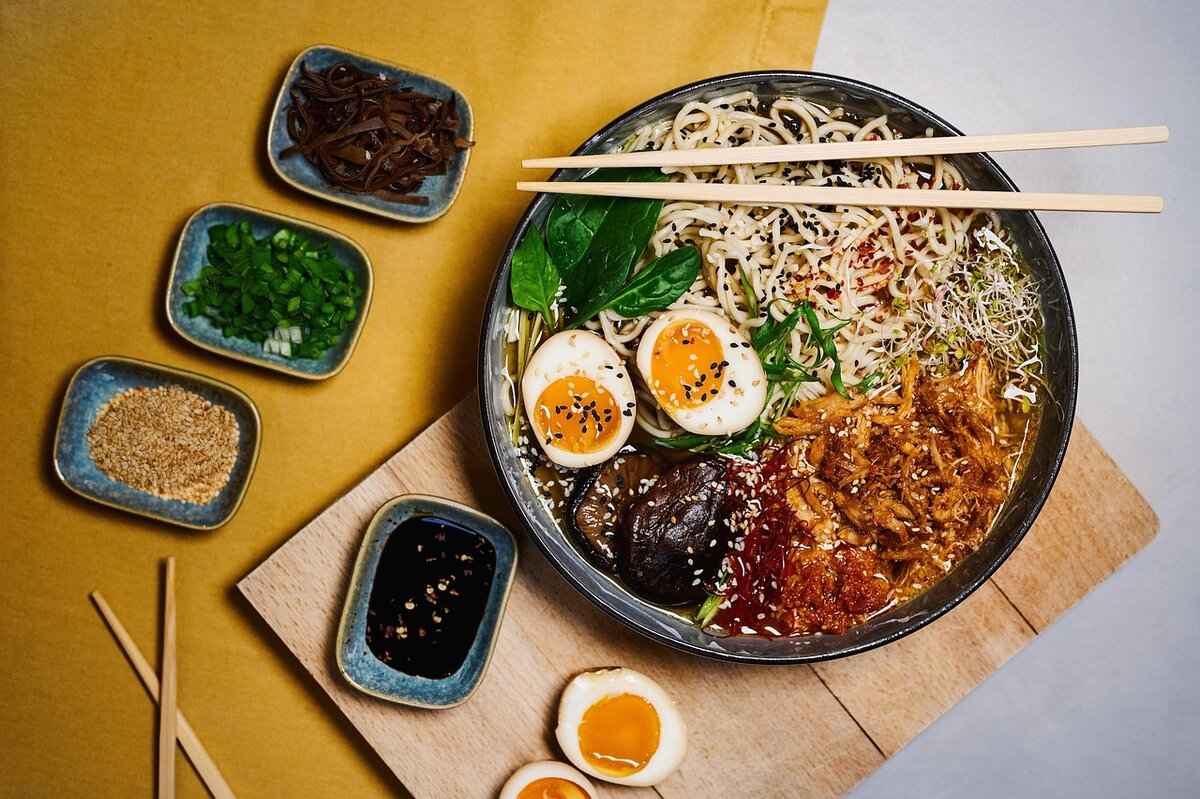
Why Is Miso Ramen Gaining Popularity?
Miso ramen has seen a significant surge in popularity in recent years, captivating ramen enthusiasts and newcomers alike. Its unique, hearty miso-based broth offers a rich and satisfying flavor that sets it apart from other ramen styles. This article explores the reasons behind the growing fame of miso ramen, highlighting its versatility, health benefits, and regional variations.
The distinctive flavor profile of miso ramen is primarily attributed to the use of miso paste, a fermented soybean product that adds depth and umami. Unlike other ramen broths, which may focus on meat or seafood, miso ramen presents a robust, savory taste that can be tailored to individual preferences by adjusting the type of miso used. Common varieties include white miso (shiro miso), which is sweeter, and red miso (aka miso), which is saltier and more intense.
One of the key reasons for the rising popularity of miso ramen is its adaptability. Chefs and home cooks alike can experiment with various ingredients, creating unique versions that cater to different tastes and dietary needs. For instance, adding vegetables such as corn, bean sprouts, or spinach can enhance the nutritional value, while proteins like chicken, pork, or tofu can cater to different dietary preferences.
Miso ramen is not only delicious but can also be a healthier option compared to other ramen types. The fermentation process used to create miso results in beneficial probiotics, which can aid digestion and support gut health. Additionally, miso is rich in vitamins and minerals, including B vitamins and iron, making it a nutritious choice for those looking to enjoy a hearty meal without compromising health.
Different regions in Japan have embraced miso ramen, each adding local flavors and ingredients. For example, in Hokkaido, miso ramen often features a richer broth, complemented by local seafood and vegetables. In contrast, Tokyo variations may incorporate lighter broths and a variety of toppings, reflecting the region’s culinary preferences. This regional diversity not only showcases the versatility of miso ramen but also highlights the rich tapestry of Japanese cuisine.
- Chashu (braised pork) – adds a savory richness.
- Menma (bamboo shoots) – contributes a crunchy texture.
- Green onions – provide freshness and a hint of spice.
- Soft-boiled eggs – enhance creaminess and flavor.
- Corn – adds sweetness, especially popular in Hokkaido versions.
Making miso ramen at home is an enjoyable and rewarding experience. Start with a quality miso paste and a flavorful broth as your base. Experiment with different toppings to find your perfect combination. For a quick meal, consider using instant miso ramen packets, which often come with seasoning and toppings included. However, for a more authentic experience, try making your broth from scratch by simmering bones and vegetables.
In conclusion, the growing popularity of miso ramen can be attributed to its unique flavor, adaptability, health benefits, and regional variations. As more people discover this delicious dish, it continues to carve out its place in the culinary landscape, inviting everyone to explore its rich and diverse offerings.
What Ingredients Are Essential for Miso Ramen?
Miso ramen is a beloved dish that has gained immense popularity in recent years due to its hearty flavor and versatility. Understanding the essential ingredients that make up this dish is crucial for anyone looking to recreate an authentic bowl of miso ramen at home. Below, we explore the key components that contribute to its rich and satisfying profile.
- Miso Paste: The star ingredient of miso ramen, miso paste is a fermented soybean product that provides the broth with its signature umami flavor. There are various types of miso, including white, red, and mixed miso, each contributing different taste profiles to the dish.
- Broth: The base of any ramen dish, the broth is typically made from chicken or pork bones, simmered for hours to extract deep flavors. Some variations incorporate vegetable broth for a lighter option, catering to vegetarian preferences.
- Vegetables: A variety of fresh vegetables are often added to enhance the flavor and texture of the ramen. Common choices include green onions, bean sprouts, corn, and carrots. These ingredients not only add color but also nutritional value to the dish.
- Noodles: The type of noodles used in miso ramen is typically slightly thicker and wavy, allowing them to hold onto the rich broth. The texture of the noodles is essential, as it complements the overall experience of enjoying ramen.
- Toppings: Toppings play a crucial role in the overall flavor and presentation of miso ramen. Common toppings include chashu (braised pork), soft-boiled eggs, nori (seaweed), and menma (bamboo shoots). Each topping adds its unique flavor and texture, enhancing the dish.
The combination of these ingredients creates a harmonious balance of flavors in miso ramen. The umami-rich miso paste melds beautifully with the savory broth, while the fresh vegetables introduce a crispness that contrasts with the richness of the noodles and broth. The toppings not only provide additional flavors but also elevate the dish’s visual appeal, making it as delightful to look at as it is to eat.
One of the reasons for the growing popularity of miso ramen is its adaptability. Chefs and home cooks alike can experiment with different types of miso, broths, and toppings to create unique variations that reflect personal tastes or regional influences. For instance, in Hokkaido, miso ramen often includes sweet corn and butter, adding a creamy texture that is distinct to the region.
In conclusion, the essential ingredients of miso ramen—miso paste, rich broth, fresh vegetables, hearty noodles, and flavorful toppings—work together to create a bowl of comfort that is both satisfying and versatile. Whether enjoyed at a local ramen shop or crafted in your kitchen, understanding these components will enhance your appreciation of this iconic dish.
How Do Regional Variations of Miso Ramen Differ?
When it comes to miso ramen, the variations across different regions of Japan are as diverse as the landscapes themselves. Each area brings its own unique twist to this beloved dish, often incorporating local ingredients and traditional flavors that reflect their culinary heritage.
In Hokkaido, the northernmost island of Japan, miso ramen is a staple that showcases the region’s rich agricultural and marine resources. The broth is typically rich and hearty, often made with a blend of pork and chicken bones simmered with miso paste. This results in a creamy, flavorful base that is perfect for the cold climate. Hokkaido miso ramen often features toppings such as sweet corn, butter, and charcoal-grilled pork, which add depth and richness to the dish.
In contrast, Tokyo’s take on miso ramen tends to be lighter, with a broth that balances miso with soy sauce. This version often incorporates a variety of vegetables, such as bean sprouts and green onions, which lend a refreshing crunch. The noodles are typically straight and firm, allowing them to hold the broth well. Tokyo ramen shops may also offer a variety of toppings, such as nori (seaweed) and menma (bamboo shoots), enhancing the overall flavor profile.
Moving south to Kyushu, the miso ramen here often reflects the region’s penchant for bold flavors. Kyushu’s version typically includes a rich, dark miso that is fermented longer than its counterparts. The broth is often enhanced with pork fat and a variety of local seafood, creating a deep umami flavor. Toppings may include spicy pickled vegetables and soft-boiled eggs, which add a kick and creaminess to each bite.
Across Japan, the use of local ingredients significantly influences the flavor and appeal of miso ramen. In regions known for their seafood, such as Hokkaido and Osaka, fresh fish and shellfish may be incorporated into the broth or as toppings. Meanwhile, areas with rich agricultural backgrounds often use seasonal vegetables to enhance the dish’s freshness. This regional adaptation not only showcases local produce but also connects the dish to its cultural roots.
- Hokkaido: Sweet corn, butter, and grilled pork
- Tokyo: Bean sprouts, green onions, and nori
- Kyushu: Spicy pickled vegetables and soft-boiled eggs
The preparation methods for miso ramen can also vary by region. For instance, in Hokkaido, chefs may take the time to slow-cook the broth to develop a richer flavor, while in Tokyo, a quicker method might be employed to maintain the freshness of the vegetables. Regardless of the approach, the goal remains the same: to create a satisfying bowl of ramen that reflects the local culture and ingredients.
In summary, the regional variations of miso ramen across Japan highlight the diversity and richness of Japanese cuisine. Each bowl tells a story of its origins, influenced by local ingredients, culinary traditions, and the unique tastes of the people who enjoy it.
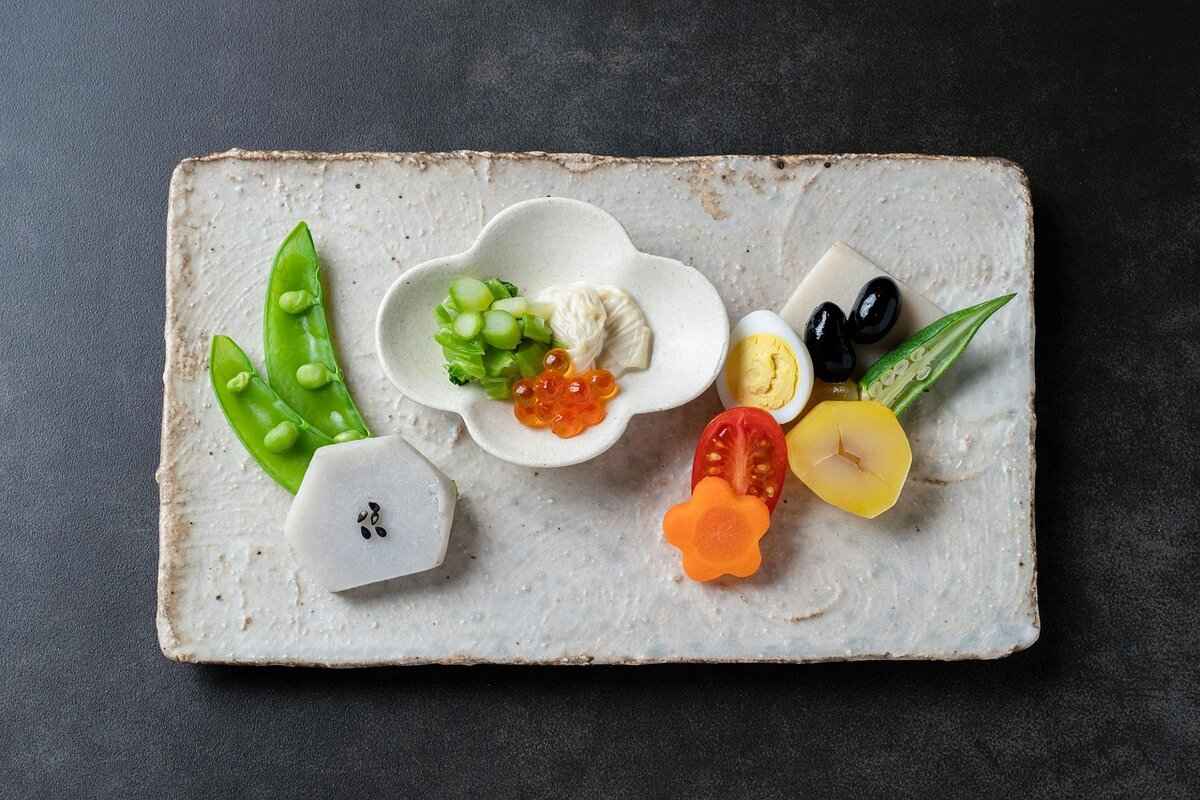
What Is the Role of Noodles in Ramen?
Noodles are an essential element of ramen, serving as the backbone of this beloved dish. Their texture and flavor significantly influence the overall ramen experience. In this section, we will explore the various types of ramen noodles, their preparation, and their importance in creating the perfect bowl of ramen.
Ramen noodles come in a variety of shapes and sizes, each designed to complement the specific broth they accompany. The most common types include:
- Straight Noodles: These noodles are typically thin and have a smooth texture, making them ideal for lighter broths like shoyu.
- Wavy Noodles: The waves in these noodles help to capture more broth, enhancing the flavor with each bite. They are often used in miso ramen.
- Curly Noodles: These thicker noodles provide a chewy texture and are commonly found in tonkotsu ramen, pairing perfectly with its rich broth.
The preparation of ramen noodles is crucial for achieving the desired flavor and texture. Key factors include:
- Cooking Time: The duration for which the noodles are boiled can affect their chewiness. Shorter cooking times yield firmer noodles, while longer cooking times create a softer texture.
- Water Quality: The mineral content of water can alter the taste of the noodles. Using high-quality water can enhance the overall flavor profile of the dish.
- Alkalinity: Ramen noodles are typically made with kansui, an alkaline mineral water that gives them their unique texture and yellow color. The level of alkalinity can influence the firmness of the noodles.
Noodles are not just a filler; they play a vital role in balancing the dish. Their texture contrasts with the rich broth, while their flavor complements the overall taste. Here are a few reasons why noodles are significant:
- Texture: The right noodle texture enhances the mouthfeel of ramen, making each bite satisfying.
- Flavor Absorption: Noodles absorb the broth’s flavors, creating a harmonious blend that elevates the dish.
- Visual Appeal: The appearance of the noodles adds to the overall presentation, making the dish more inviting.
Regional variations in ramen often dictate the type of noodles used. For instance:
- Hokkaido: Known for its miso ramen, Hokkaido often features thicker, wavy noodles that hold up well in hearty broths.
- Tokyo: Tokyo-style ramen typically uses straight, thin noodles that pair well with soy sauce-based broths.
- Fukuoka: In Fukuoka, tonkotsu ramen is famous for its curly, chewy noodles that complement the rich, creamy broth.
In summary, the role of noodles in ramen is fundamental, shaping the dish’s overall texture and flavor. Understanding the different types of noodles and their preparation can significantly enhance your ramen experience. Whether you prefer straight, wavy, or curly noodles, each variety brings something unique to the table, making ramen a versatile and beloved dish across Japan.
What Types of Noodles Are Used in Ramen?
Ramen is a beloved Japanese dish that has captured the hearts and palates of food lovers around the world. A significant aspect of ramen that often goes unnoticed is the variety of noodles used in its preparation. The choice of noodles not only affects the texture but also complements the broth, enhancing the overall dining experience. In this section, we will explore the different types of ramen noodles and their unique characteristics.
Ramen noodles are distinguished by their thickness, shape, and texture. These characteristics are specifically designed to pair well with various broth styles, creating a harmonious balance in each bowl of ramen. Here are the most common types of ramen noodles:
- Straight Noodles: These noodles are typically thin and have a smooth texture. They are often used in lighter broth styles, such as shoyu ramen, where the subtle flavors of the broth can shine through. The straight shape allows for a clean bite, making them a favorite among ramen purists.
- Wavy Noodles: With their distinct ridges, wavy noodles are excellent at holding onto broth and toppings. This type of noodle is commonly found in tonkotsu ramen, where the rich, creamy pork bone broth benefits from the additional surface area provided by the waves. The texture of wavy noodles adds an enjoyable chewiness that enhances the overall experience.
- Curly Noodles: Curly noodles are less common but offer a unique texture that can add interest to the dish. They are often used in regional styles such as Hokkaido miso ramen. The curls help capture the broth and toppings, resulting in a delightful combination of flavors in each bite.
- Thick Noodles: Some ramen styles, especially those with hearty broths, utilize thick noodles. These noodles provide a satisfying chew and can stand up to robust flavors, making them ideal for miso or spicy ramen varieties.
- Egg Noodles: Made with eggs, these noodles have a rich flavor and a slightly yellow hue. They are known for their firm texture and are often used in premium ramen dishes, providing an added depth of flavor that complements the broth.
The thickness of ramen noodles plays a crucial role in the overall texture and flavor experience. Thicker noodles tend to absorb more broth, which can enhance the dish’s richness. Conversely, thinner noodles may provide a lighter mouthfeel, allowing the broth’s delicate flavors to shine. Understanding the interplay between noodle thickness and broth style is essential for appreciating the nuances of ramen.
Noodle preparation is equally important in determining the final dish’s quality. Factors such as cooking time and water quality can significantly impact the noodles’ texture. For instance, undercooked noodles may be too firm, while overcooked noodles can become mushy and lose their appealing bite. Mastering the art of noodle preparation is essential for creating an authentic ramen experience.
Regional variations in ramen often dictate the type of noodles used. For example, Tokyo-style ramen typically features straight, thin noodles, while Sapporo-style ramen is known for its curly, thicker noodles that stand up to the rich miso broth. These regional differences reflect local tastes and culinary traditions, showcasing the diversity of ramen across Japan.
In summary, the types of noodles used in ramen are not merely a matter of preference; they are integral to the dish’s overall character. Whether you prefer the smoothness of straight noodles or the chewiness of wavy noodles, each type offers a unique experience that enhances the enjoyment of this iconic Japanese dish.
How Does Noodle Preparation Affect Flavor?
When it comes to enjoying a bowl of ramen, the preparation of the noodles plays a crucial role in determining the overall flavor and texture of the dish. From the choice of ingredients to the cooking techniques employed, every aspect contributes to the final experience. This section delves into how noodle preparation can elevate the ramen experience, ensuring that each bite is a delight.
The quality of water used in noodle preparation is often overlooked but is paramount in achieving the perfect texture. Water that is too hard or too soft can alter the noodle’s final consistency. For instance, using filtered water can help maintain the ideal pH balance, allowing for a firmer noodle that holds up well in the broth.
Cooking time is another critical factor that cannot be ignored. Most ramen noodles require a cooking time of 2 to 5 minutes, depending on their thickness and type. Overcooking can lead to a mushy texture, while undercooking can result in a chewy bite. Timing is essential; thus, it is recommended to keep a close eye on the noodles as they cook.
The thickness and shape of the noodles also play a significant role in flavor absorption. Thicker noodles tend to hold onto the broth better, enhancing each mouthful with rich flavors. On the other hand, thinner noodles may offer a lighter experience, making them ideal for lighter broths like shoyu. Understanding the relationship between noodle type and broth is essential for creating a harmonious dish.
After cooking, rinsing the noodles in cold water can halt the cooking process and remove excess starch, preventing them from becoming too sticky. This step is particularly important for achieving a desirable texture that complements the broth. Rinsed noodles are less likely to clump together, ensuring that each strand remains distinct and flavorful.
The preparation of ramen noodles significantly affects the overall eating experience. Well-prepared noodles provide a satisfying chewiness that enhances the enjoyment of the dish. The right balance of firmness and tenderness allows diners to fully appreciate the flavors of the broth and the toppings. Additionally, the way noodles are served—whether in a broth or stir-fried—can also alter the experience, making it essential to consider all aspects of noodle preparation.
- Not salting the water: Failing to add salt can result in bland noodles.
- Ignoring the cooking time: Overcooking or undercooking can ruin the texture.
- Skipping the rinse: Not rinsing can lead to sticky noodles that clump together.
In conclusion, the preparation of noodles is a vital component of the ramen-making process that should not be underestimated. By paying attention to water quality, cooking time, noodle thickness, and rinsing techniques, one can significantly enhance the overall ramen experience. Each of these elements contributes to the rich tapestry of flavors and textures that make ramen a beloved dish worldwide.
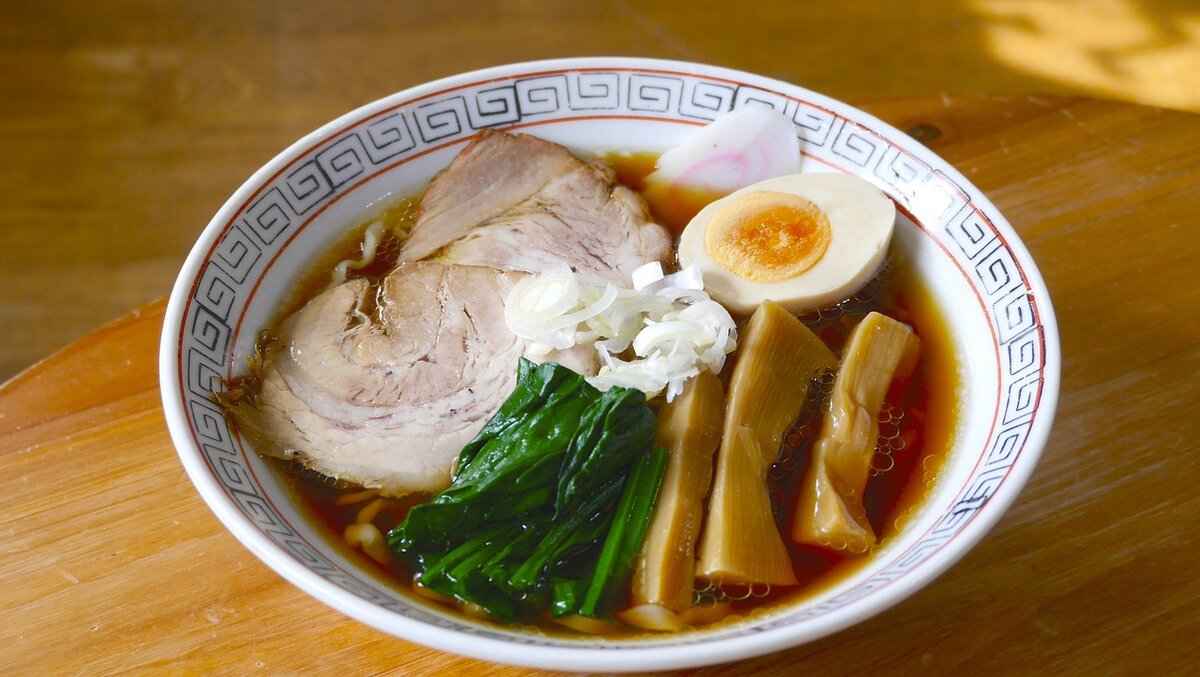
Why Are Toppings Important in Ramen?
Toppings are an essential component of ramen, significantly influencing the dish’s overall flavor, texture, and presentation. Each topping serves a unique purpose, enhancing the ramen experience and complementing the broth and noodles. Understanding the importance of these toppings can deepen your appreciation for this beloved Japanese dish.
Toppings are not just decorative; they add complexity to the flavor profile of ramen. Each ingredient contributes its own unique taste and texture, creating a harmonious balance. For instance, the rich flavor of chashu (braised pork) contrasts beautifully with the crunch of menma (bamboo shoots), while the creaminess of a soft-boiled egg enhances the broth’s richness.
The right toppings can elevate the ramen experience by providing a variety of textures. For example, the chewy noodles combined with the tender chashu and the crispy nori (seaweed) create a delightful mouthfeel. Additionally, toppings like green onions offer a fresh, sharp contrast to the savory broth, brightening the overall dish.
- Chashu: Slow-braised pork belly, tender and flavorful, often marinated in a soy sauce mixture.
- Menma: Fermented bamboo shoots that add a slightly sweet and earthy flavor.
- Soft-Boiled Eggs: Typically marinated in soy sauce, these eggs provide a creamy texture that enriches the broth.
- Nori: Dried seaweed sheets that add a hint of umami and a contrasting texture.
- Green Onions: Freshly sliced, they add brightness and a slight crunch.
Different ramen styles feature distinct toppings that reflect regional preferences and ingredient availability. For instance, tonkotsu ramen from Fukuoka often includes black garlic oil for an extra depth of flavor, while miso ramen from Hokkaido may incorporate corn and butter for a rich, hearty taste. This regional variation showcases the adaptability of ramen, allowing it to incorporate local flavors and ingredients.
While traditional toppings are widely enjoyed, many ramen shops offer unique options that can surprise and delight. Some examples include:
- Spicy Miso: A spicy paste that can be added for an extra kick.
- Fried Garlic: Provides a crunchy texture and robust flavor.
- Seasonal Vegetables: Fresh produce, such as spinach or seasonal greens, can add color and nutrition.
The visual appeal of ramen is greatly enhanced by its toppings. A beautifully arranged bowl with vibrant colors and varying textures can make the dish more inviting. The contrast of dark nori against the golden broth, or the bright green of onions on a rich, creamy base, creates an aesthetic that is as important as the flavor itself.
Experimenting with different toppings can lead to discovering new flavor combinations that you may enjoy. Many ramen enthusiasts enjoy customizing their bowls, mixing and matching toppings to find their perfect balance. This personalization not only enhances your dining experience but also allows you to explore the diverse world of ramen.
What Are the Most Common Ramen Toppings?
Ramen, a beloved Japanese noodle soup, is not only defined by its rich broth and unique noodles but also by its diverse range of toppings. Each topping plays a vital role in enhancing the overall flavor and texture of the dish. In this article, we will explore the most common ramen toppings, their significance, and how they contribute to the ramen experience.
- Chashu: This tender, braised pork is a staple in many ramen bowls. Its rich flavor and melt-in-your-mouth texture provide a satisfying contrast to the noodles and broth. Chashu is often marinated in soy sauce, mirin, and sake, allowing it to absorb a depth of flavor that elevates the entire dish.
- Menma: These fermented bamboo shoots add a crunchy texture and a slightly sweet, earthy flavor to ramen. Menma is often prepared through a fermentation process that enhances its umami profile, making it a perfect complement to the savory broth.
- Green Onions: Also known as scallions, green onions are commonly used as a garnish in ramen. Their fresh, sharp flavor brightens the dish and balances the richness of the broth. They are often sliced thinly and sprinkled on top just before serving.
- Boiled Eggs: Soft-boiled eggs, typically marinated in soy sauce, are another popular topping. The creamy yolk adds richness to the ramen, while the marination infuses it with flavor. The contrast of the egg’s texture with the noodles and broth creates a delightful eating experience.
- Nori: This dried seaweed is often included as a topping for ramen. Nori adds a subtle oceanic flavor and a unique texture that complements the dish. It can be served as whole sheets or shredded for easier consumption.
- Tofu: For those seeking a vegetarian option, tofu provides a protein-rich alternative. Its ability to absorb the flavors of the broth makes it a versatile addition, offering a different texture without compromising taste.
- Sesame Seeds: Sprinkling sesame seeds on top of ramen adds a nutty flavor and a slight crunch, enhancing the overall sensory experience. They also contribute to the visual appeal of the dish, making it more enticing.
The choice of toppings can vary significantly across different regions of Japan, reflecting local ingredients and culinary traditions. For instance, in Hokkaido, you might find corn and butter as popular additions to miso ramen, while in Tokyo, the focus may be on a more minimalist approach, highlighting the broth’s flavor with just a few toppings.
Furthermore, some ramen shops pride themselves on their unique toppings, creating signature dishes that draw on local flavors and ingredients. This diversity showcases the creativity and adaptability of ramen culture throughout Japan.
Toppings are not merely decorative; they play a crucial role in the overall ramen experience. Each topping contributes its unique flavor, texture, and nutritional value, creating a harmonious balance in every bowl. The combination of these toppings allows for a personalized experience, enabling diners to customize their ramen to suit their preferences.
In conclusion, the world of ramen toppings is as diverse as the ramen itself. From the rich and tender chashu to the crunchy menma and bright green onions, each component adds its own character to the dish. Understanding these toppings enhances appreciation for ramen, making each bowl a delightful exploration of flavors and textures.
How Do Toppings Vary by Region?
Ramen is more than just a dish; it is a reflection of Japan’s rich culinary heritage. Each region of Japan has its own unique take on ramen, particularly when it comes to toppings. These toppings not only enhance the flavor of the ramen but also showcase local ingredients and culinary traditions. In this article, we will explore how toppings vary by region and the significance of these variations.
In Japan, ramen toppings can be as diverse as the regions themselves. While some toppings are universally loved, others are specific to certain areas, reflecting local tastes and available ingredients. Here are some notable examples:
- Tokyo: In the bustling capital, shoyu ramen reigns supreme, typically topped with menma (bamboo shoots), nori (seaweed), and chashu (braised pork). The toppings tend to be simple yet flavorful, allowing the soy sauce-based broth to shine.
- Hokkaido: Known for its rich miso ramen, Hokkaido often features toppings like sweet corn, butter, and bean sprouts. These ingredients not only add flavor but also reflect the region’s agricultural bounty.
- Fukuoka: The birthplace of tonkotsu ramen, Fukuoka’s toppings include green onions, soft-boiled eggs, and pickled ginger. The creamy pork bone broth is complemented by these toppings, creating a harmonious balance of flavors.
- Osaka: Here, you might find ramen topped with fried garlic and spicy oil, adding a kick to the dish. Osaka’s ramen often leans towards a stronger flavor profile, aligning with the city’s vibrant food culture.
The availability of local ingredients plays a crucial role in determining the toppings used in ramen. For instance, coastal regions may feature seafood-based toppings such as shrimp or scallops, while mountainous areas might incorporate wild vegetables and mushrooms. This use of local produce not only enhances the flavor but also supports local farmers and businesses.
In addition to local ingredients, cultural traditions also influence ramen toppings. For example, in areas with a strong Buddhist heritage, you might find vegetarian toppings such as tofu and seasonal greens. Conversely, regions with a history of meat consumption may favor richer, meat-based toppings. This cultural aspect adds another layer of depth to the ramen experience, making it not just a meal but a story of the region’s history and values.
In Japan, certain toppings are reserved for special occasions or festivals. For instance, during celebrations, you might come across ramen topped with kamaboko (fish cake) or shredded daikon, symbolizing good fortune and prosperity. These seasonal toppings not only enhance the dish but also connect diners to the cultural significance of the meal.
The diversity of ramen toppings across Japan showcases the country’s rich culinary landscape. From the simple yet effective toppings in Tokyo to the unique ingredients found in Hokkaido, each region offers a distinct flavor profile that reflects local culture and traditions. Understanding these variations allows ramen enthusiasts to appreciate the dish on a deeper level, making each bowl a unique culinary adventure.

How to Enjoy Ramen Like a Local?
When it comes to enjoying ramen, immersing yourself in the cultural practices surrounding this beloved dish can significantly enhance your experience. Ramen is not just a meal; it’s a ritual filled with traditions that reflect the heart of Japanese cuisine. Here are some essential tips to savor ramen like a local.
Understanding the cultural nuances of ramen consumption can elevate your dining experience. In Japan, eating ramen is often a communal activity, and it’s common to see people enjoying their bowls in a casual setting. Embrace the atmosphere and the shared joy of dining.
In Japan, slurping your noodles is not only acceptable but encouraged! It’s believed to enhance the flavor and aroma of the ramen. Moreover, it shows appreciation for the meal. So don’t hesitate to slurp your noodles; it’s a sign that you’re enjoying your meal.
When it comes to enjoying ramen, the way you handle your bowl matters. It’s common practice to lift the bowl to your mouth to get the last bits of broth. This act is not only practical but also a sign of respect for the chef’s hard work. Just remember to keep your elbows off the table!
Pairing your ramen with the right beverages can significantly enhance your meal. Sake, a traditional Japanese rice wine, complements the flavors of many ramen types, especially miso and shoyu. Alternatively, a chilled Japanese beer can provide a refreshing contrast to the rich, savory broth.
With various ramen styles available, it’s essential to choose one that suits your palate. If you enjoy a rich and creamy experience, opt for tonkotsu ramen. For a lighter option, shoyu ramen is a fantastic choice. Exploring different styles can be a delightful journey through Japan’s regional flavors.
Toppings play a crucial role in enhancing the overall ramen experience. Each topping adds unique flavors and textures that complement the broth. Common toppings include chashu (braised pork), menma (bamboo shoots), and soft-boiled eggs. Don’t hesitate to mix and match to find your perfect combination!
After finishing your bowl, it’s customary to express gratitude. In Japanese culture, saying “gochisousama deshita” (thank you for the meal) shows appreciation for the food and the effort that went into making it. This small gesture can enhance your dining experience and connect you with the local culture.
By embracing these cultural practices and nuances, you can enjoy ramen like a true local. Whether you’re slurping your noodles or savoring the rich broth, each bite becomes a celebration of Japanese culinary artistry.
What Are the Etiquette Rules for Eating Ramen?
When it comes to enjoying ramen, understanding the etiquette rules can greatly enhance your dining experience. Ramen is not just a meal; it is a cultural experience that reflects the rich traditions of Japan. Below, we will explore the essential etiquette to follow when indulging in this beloved dish.
One of the most distinctive aspects of eating ramen is the act of slurping your noodles. This practice serves two main purposes:
- Enhancing Flavor: Slurping allows air to mix with the noodles, which can enhance the flavor and aroma of the broth.
- Signaling Enjoyment: In Japanese culture, slurping is a way to show appreciation for the meal. It indicates to the chef that you are enjoying their creation.
Using chopsticks correctly is vital when eating ramen. Here are some key points to remember:
- Grip: Hold the chopsticks towards the thicker end, using your thumb, index, and middle fingers. This grip provides better control.
- Avoid Pointing: It is considered impolite to point with your chopsticks. Instead, use them to pick up food gracefully.
- Do Not Stick in the Bowl: Never leave your chopsticks standing upright in your bowl of ramen, as this resembles a funeral offering.
When enjoying ramen, the way you handle the bowl is equally important:
- Bring the Bowl to Your Mouth: Instead of leaning over the bowl, it is customary to lift the bowl closer to your mouth. This allows for easier access to the noodles and broth.
- Finish Every Last Drop: It is considered a compliment to the chef if you finish the broth. Don’t hesitate to sip directly from the bowl if you wish!
Yes, several other tips can enhance your ramen-eating experience:
- Wait for Everyone: If dining with others, it is polite to wait until everyone is served before you start eating.
- Be Mindful of Toppings: When adding toppings, do so sparingly and avoid overwhelming the dish. Each topping is meant to complement the ramen.
- Use the Right Utensils: If available, you may use a spoon for the broth, but be sure to use chopsticks for the noodles.
By adhering to these etiquette rules, you can enjoy ramen in a way that respects its cultural significance and enhances your overall experience. Remember, ramen is more than just a dish; it is a celebration of flavors, textures, and traditions.
How Can You Pair Ramen with Drinks?
When it comes to enjoying ramen, the experience can be significantly enhanced by selecting the right beverages to accompany this beloved dish. Pairing ramen with drinks not only complements the flavors of the meal but also elevates the overall dining experience. In this section, we will explore popular drink pairings that harmonize with various ramen styles, ensuring that your meal is both delicious and satisfying.
Tonkotsu ramen, known for its rich and creamy pork bone broth, pairs exceptionally well with light beers or Japanese sake. The crispness of a lager or pilsner can cut through the richness of the broth, providing a refreshing contrast. Alternatively, a smooth sake, such as junmai or ginjo, complements the flavors of the pork and enhances the umami profile of the dish.
Shoyu ramen, with its soy sauce-based broth, offers a savory and slightly sweet flavor that pairs well with amber ales or white wines. The malty sweetness of amber ales complements the soy sauce, while a chilled glass of Sauvignon Blanc can highlight the dish’s umami notes. For a more traditional approach, consider enjoying shoyu ramen with a cold glass of sake, which enhances the overall dining experience.
Miso ramen, known for its hearty and robust flavor, can be paired with dark beers or fruity cocktails. The rich, nutty flavors of miso are beautifully complemented by the roasted notes of a stout or porter. For those looking for a lighter option, a cocktail made with yuzu or shochu can add a refreshing twist that balances the richness of the broth.
Absolutely! For those who prefer non-alcoholic options, green tea or iced tea can be excellent companions to ramen. The subtle flavors of green tea cleanse the palate and enhance the overall taste of the dish. Additionally, sparkling water with a hint of lemon can provide a refreshing contrast to the savory elements of the ramen.
Regional variations in ramen styles can also influence the choice of beverages. For instance, Hokkaido miso ramen might be best paired with a local craft beer that highlights the region’s unique flavors. Similarly, Kyoto-style shoyu ramen may be complemented by a locally brewed sake, showcasing the rich culinary traditions of the area.
- Consider the broth: Rich broths like tonkotsu benefit from lighter drinks, while heartier broths like miso can handle darker beers.
- Think about the toppings: Toppings can influence drink choices; for example, spicy toppings may pair well with sweeter beverages.
- Don’t be afraid to experiment: Personal preferences play a significant role in pairing, so feel free to try different combinations.
By thoughtfully selecting beverages to accompany your ramen, you can create a harmonious dining experience that enhances the flavors of both the dish and the drink. Whether you opt for traditional sake, craft beer, or refreshing non-alcoholic options, the right pairing can elevate your ramen experience to new heights.
Frequently Asked Questions
- What is the difference between tonkotsu and shoyu ramen?
Tonkotsu ramen features a rich, creamy pork bone broth, while shoyu ramen is based on a savory soy sauce broth. Each style offers a unique flavor profile that reflects its regional origins.
- Are there vegetarian options for ramen?
Absolutely! Many ramen shops offer vegetarian ramen, often using vegetable broth and tofu or other plant-based toppings. It’s a delicious way to enjoy ramen without meat!
- How can I make ramen at home?
Making ramen at home can be fun! Start with a good broth—either chicken, pork, or vegetable. Then, add your favorite noodles and toppings like green onions, soft-boiled eggs, and chashu. Don’t forget to customize it to your taste!
- What toppings should I try on my ramen?
Popular toppings include chashu (braised pork), menma (bamboo shoots), nori (seaweed), and soft-boiled eggs. Feel free to mix and match to find your perfect combination!
- Is ramen a healthy meal option?
Ramen can be a hearty meal, but its healthiness depends on the ingredients used. Opting for less fatty broths and adding plenty of vegetables can make it a more balanced choice.














